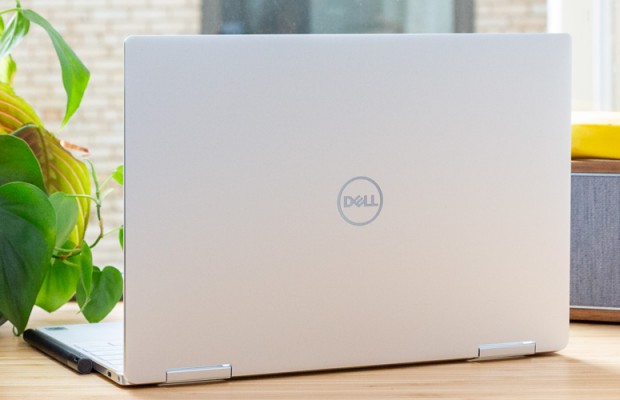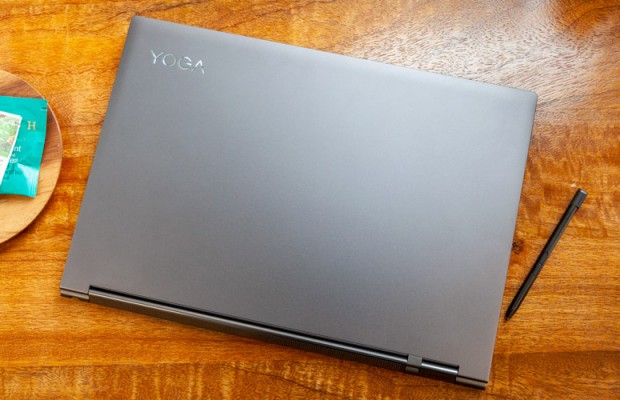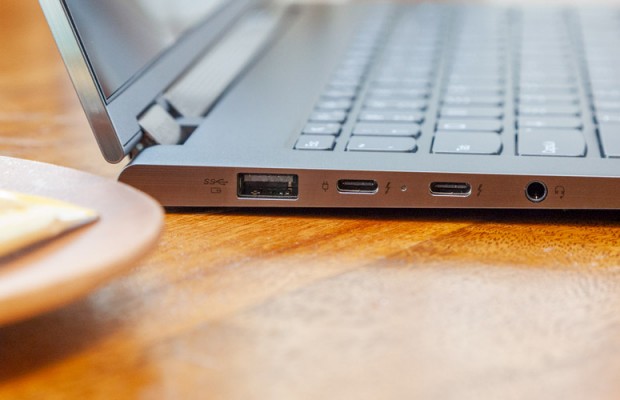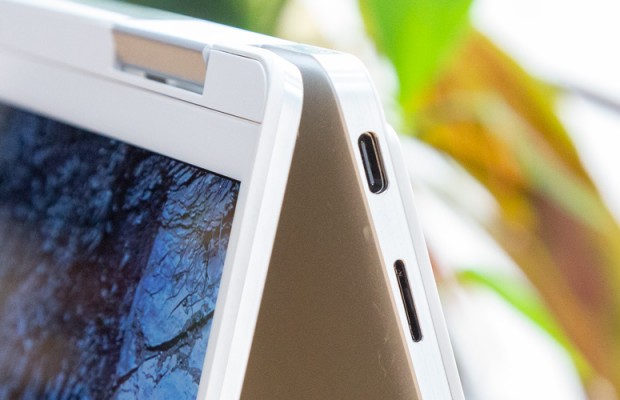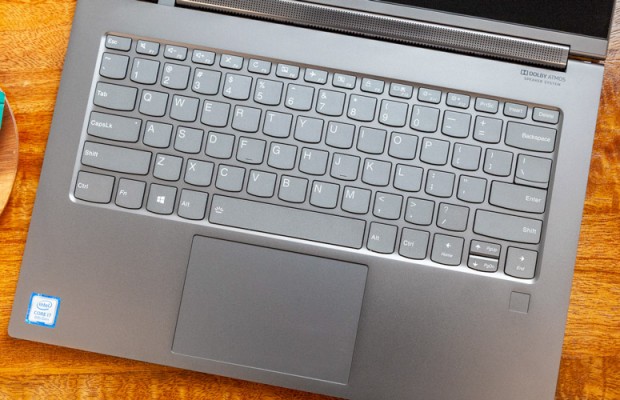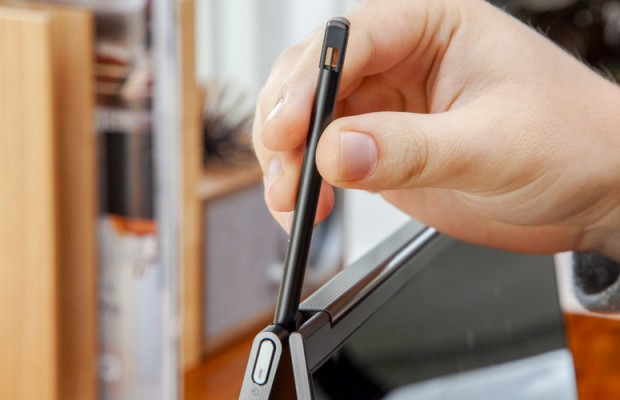Dell XPS 13 2-in-1 vs Lenovo Yoga C930: Which 2-in-1 Is Best?
Lenovo's Yoga C930 was named our favorite 2-in-1 of 2018 for its stylish chassis, long battery life and an impressive soundbar speaker. But since its release, a handful of newer convertible laptops have put this impressive machine at risk of being forgotten.
The latest of these contenders is Dell's XPS 13 2-in-1, an Intel 10th Gen CPU-powered convertible sibling to the outstanding XPS 13. The XPS 13 2-in-1 doesn't disappoint, dazzling us with its stunning design, excellent performance and long battery life.
But despite being more than a year old, the Yoga C930 is still a competitive 2-in-1 laptop. So which laptop should you buy: the aging Yoga C930 or the new XPS 13 2-in-1? Or should you wait for Lenovo's upcoming Yoga C940, which will have 10th Gen CPUs and a new 15.6-inch model? Read on to find out.
Dell XPS 13 2-in-1 vs Lenovo Yoga C930: Specs Compared
| Dell XPS 13 2-in-1 | Lenovo Yoga C930 | |
| Starting Price (as tested) | $979 ($1,597) | $1,299 |
| Colors | Platinum Silver/Arctic White | Iron Gray, Mica |
| Display | 13.4-inch, 1920 x 1200; 16:10 aspect ratio | 13.9 inches, 1920 x 1080 or 4K |
| CPU | 10th Gen Core i3, Core i3, Core i7 | 8th Gen Core i5, Core i7 |
| RAM | 4GB, 8GB, 16GB | 8GB, 12GB, 16GB |
| SSD | 256GB, 512GB, 1TB | 256GB, 512GB, 1TB |
| Ports | 2 Thunderbolt 3, microSD card slot, headphone | USB 3.1, 2 Thunderbolt 3, headphone |
| Size | 11.7 x 8.2 x 0.5 inches | 12.6 x 8.9 x 0.6 inches |
| Weight | 2.9 pounds | 3.1 pounds |
Design
Take the XPS 13 --- one of the most beautiful laptops we've ever tested --- and give it a flexible hinge so that the display can fold back, and you'll get the general design of the XPS 13 2-in-1. Needless to say, this is one stunning machine.
Like the clamshell version, the XPS 13 2-in-1 comes in Arctic White with a soft silver aluminum lid and a white woven glass-fiber interior. Chrome hinges and trim around the chassis add a nice contrast to the stark white surfaces.
Sign up to receive The Snapshot, a free special dispatch from Laptop Mag, in your inbox.
A signature design element of the XPS series --- the InfinityEdge display --- makes a welcome return to the XPS 13 2-in-1, and draws your eyes toward its unique 16:10 display. Dell also nailed the details: the XPS 13 2-in-1's webcam is above the display and a variable torque hinge that lets you open the lid with one finger.
The Yoga C930 may be a year old, but the sleek design of this 2-in-1 laptop has held up over time. As is the case with each Yoga edition, the highlight of the C930's design is the hinge. This latest model trades form for function, swapping the glitzy watchband hinge out for a soundbar speaker, which pumps out surprisingly clear audio.
A minimalist chassis gives the Yoga C930 an air of sophistication while its aluminum materials has a premium feel. There is a certain elegance to the Yoga C930's mix of polished earthen tones and the gunmetal finish on the laptop's lid and deck. We also appreciate the Yoga C930's integrated pen slot, which gives you a place to store the included stylus when you're not using it.
MORE: Best Lenovo Laptops
The Yoga C930 (12.6 x 8.9 x 0.6 inches, 3.1 pounds) has a larger, 13.9-inch display and thicker bezels, and, therefore, has a bigger footprint than the XPS 13 2-in-1 (11.7 x 8.2 x 0.5 inches, 2.9 pounds) but is only slightly heavier.
Winner: XPS 13 2-in-1
Ports
Ports are in low supply on these laptops, but each contender offers something the other doesn't.
Along with two Thunderbolt 3 ports and a headphone jack, the Yoga C930 has a USB 3.1 (Type-A) port that is missing on the XPS 13 2-in-1.
The XPS 13 2-in-1 also has two Thunderbolt 3 inputs and a headphone jack but fits a microSD card slot instead of a full-size USB.
We value a USB 3.1 port over the microSD card slot, so the Yoga C930 wins this round by a hair.
Winner: Yoga C930
Display
The XPS 13 2-in-1 and Yoga C930 both have unorthodox display sizes. But if we had to choose one to watch content on, it would be the XPS 13 2-in-1's 13.4-inch, 1920 x 1200-pixel display, which is brighter and more vivid than the Yoga C930's 13.9-inch, 1080p panel.
According to our colorimeter, the XPS 13 2-in-1's display, which has a 16:10 aspect ratio, covers 113% of the sRGB color gamut, making it slightly more vibrant than the Yoga C930's (100%) display but short of the category average (131%).
And while it may not have the more colorful display, the XPS 13 2-in-1's panel averaged 516 nits of peak brightness, which destroys the Yoga C930 (273 nits) and the category average (348 nits).
The XPS 13 2-in-1 and Yoga C930 are both available with 4K display, however, we haven't gotten a chance to test these models.
Winner: XPS 13 2-in-1
Keyboard, touchpad and stylus
The Yoga C930's keyboard is better than most on ultraportable laptops, even if it doesn't live up to the standard set by Lenovo's ThinkPads.
I noted a pleasant bump when a keystroke is registered, although their slightly shallow depth and high actuation means they can feel stiff during long typing sessions.
The XPS 13 2-in-1's keys are extremely shallow but clicky, which makes them reminiscent of the MacBook Pro's troubled keyboard. The XPS 13 2-in-1's keyboard is better than a MacBook Pro, although we found that the keys feel a bit sticky.
We had no problems using the touchpads on either of these laptops but we're especially smitten by the smooth, velvety surface on the XPS 13 2-in-1's 4.4 x 2.6-ich surface. That said, the Yoga C930's 4.1 x 2.7-inch will get the job done just as well.
For $99, you can get the XPS 13 2-in-1 with Dell's Premium Active Pen (PN579X), which offers 4,096 levels of pressure, a 240-Hz report rate and tilt support. The stylus has three customizable buttons and is powered by a AAA battery.
Included with the Yoga C930 is a small passive stylus (sold separately for $37), which offers the same pressure sensitivity as Dell's stylus but with only two buttons. This pen slots into the Yoga C930's rear stylus garage when you're not using it.
Winner: Yoga C930
Performance
Packing the latest Intel Core i7-1065G7 (10th Gen Ice Lake) CPU and 16GB of RAM, the XPS 13 2-in-1 understandably outperformed the Yoga C930, which has an older 8th Gen Core i7-8550U CPU and 12GB of RAM.
We'll have to wait for the Yoga C940 with its 10th Gen Intel Core (Comet Lake) CPUs for a more apples-to-apples comparison with the XPS 13 2-in-1.
The XPS 13 2-in-1 scored an impressive 18,684 on the Geekbench 4.1 overall performance benchmark, which is much higher than what the Yoga C930 (13,952) and the average premium laptop (13,853) netted.
The XPS 13 2-in-1 initially transcoded a 4K video to 1080p resolution in 24 minutes and 49 seconds, but then completed the same task in just 16 minutes upon retesting. These inconsistent results on our Handbrake video editing test might have something to do with the drivers behind the laptop's new 10th Gen CPU. Whatever the case, the Yoga C930's (20:45) and the average premium laptop's (22:05) efforts fell between those times.
The 512GB SSD inside the XPS 13 2-in-1 copied 4.97GB of multimedia data in just 11 seconds at a rate of 463 megabytes per second. That's just short of the category average (510 MBps) but faster than the Yoga C930's 256GB PCIe NVMe SSD (339.3 MBps).
Winner: XPS 13 2-in-1
Battery Life
Both laptops will get you through a full day on a charge, but the XPS 13 2-in-1 with a 1920 x 1200-pixel display is the endurance king in this competition. Lasting for 10 hours and 57 minutes on our battery test (continuous web surfing over Wi-Fi at 150 nits), the XPS 13 will stay powered a bit longer than the Yoga C930, which achieved its own impressive runtime of 10 hours and 10 minutes. The average premium laptop lasts for just 8 hours and 8 minutes.
MORE: Best 2-in-1 Laptops: Best Tablet Laptops - Laptop Mag
You can get the XPS 13 2-in-1 and Yoga C930 with 4K panels, but expect those pixel-packed displays to have a big hit on battery life.
Winner: XPS 13 2-in-1
Value and Price
These are both premium laptops, so expect to spend more than $1,000 on them. That being said, you can find some good deals on the Yoga C930, which already had a competitive starting price of $1,299 for an FHD model with a Core i7 CPU, 12GB of RAM and a 256GB SSD.
If you want a 4K display, you'll need to pay $1,519 for a Yoga C930 with a Core i7 CPU, 8GB of RAM and a 256GB SSD. Increasing RAM to 16GB and storage to 512GB increases the price to $1,649. The priciest configuration with a 1TB SSD goes for $1,839.
The base XPS 13 2-in-11 goes for $979 and comes with a Core i3 CPU, 4GB of RAM and a 256GB SSD. We recommend spending $1,299 for a model with a Core i5 CPU and 8GB of RAM.
Our XPS 13 2-in-1 review unit costs $1,597 and was equipped with a Core i7 CPU, 16GB of RAM and a 512GB SSD, making it only slightly cheaper than the Yoga C930 with a 4K panel and same specs. Upgrading to a 3840 x 2400-pixel display on the XPS 13 2-in-1 raises its price by $300.
A decked out XPS 13 2-in-1 with a 4K display, a Core i7 CPU, 16GB of RAM and a 512GB costs $1,949, or $300 more than a similarly-specced Yoga C930. Bumping your SSD to 1TB and RAM to 32GB (a rarely offered upgrade for such a small laptop) brings the price up to $2,579.
Winner: Yoga C930
Overall Winner: XPS 13 2-in-1
The XPS 13 2-in-1 is a better laptop than the Yoga C930 thanks to its faster performance, sleeker design, brighter display and longer battery life. It's no wonder we named it the best 2-in-1 laptop available today.
| Row 0 - Cell 0 | Dell XPS 13 2-in-1 | Lenovo Yoga C930 |
| Design (10) | 9 | 8 |
| Ports (10) | 6 | 7 |
| Display (15) | 13 | 10 |
| Keyboard/Touchpad (15) | 12 | 13 |
| Performance (20) | 18 | 15 |
| Battery Life (20) | 19 | 18 |
| Value (10) | 6 | 8 |
| Overall (100) | 83 | 79 |
If you like what the Yoga C930 has to offer but want the performance of the XPS 13 2-in-1, then wait for Lenovo to release the Yoga C940, which will be powered by Intel 10th Gen CPUs.
The Yoga C930 is still a good laptop despite being more than a year old and is a better value option than the pricey XPS 13 2-in-1, especially if you can find a good deal on one. If you can't wait that long, then go with the XPS 13 2-in-1, you won't be disappointed.
Phillip Tracy is the assistant managing editor at Laptop Mag where he reviews laptops, phones and other gadgets while covering the latest industry news. After graduating with a journalism degree from the University of Texas at Austin, Phillip became a tech reporter at the Daily Dot. There, he wrote reviews for a range of gadgets and covered everything from social media trends to cybersecurity. Prior to that, he wrote for RCR Wireless News covering 5G and IoT. When he's not tinkering with devices, you can find Phillip playing video games, reading, traveling or watching soccer.

